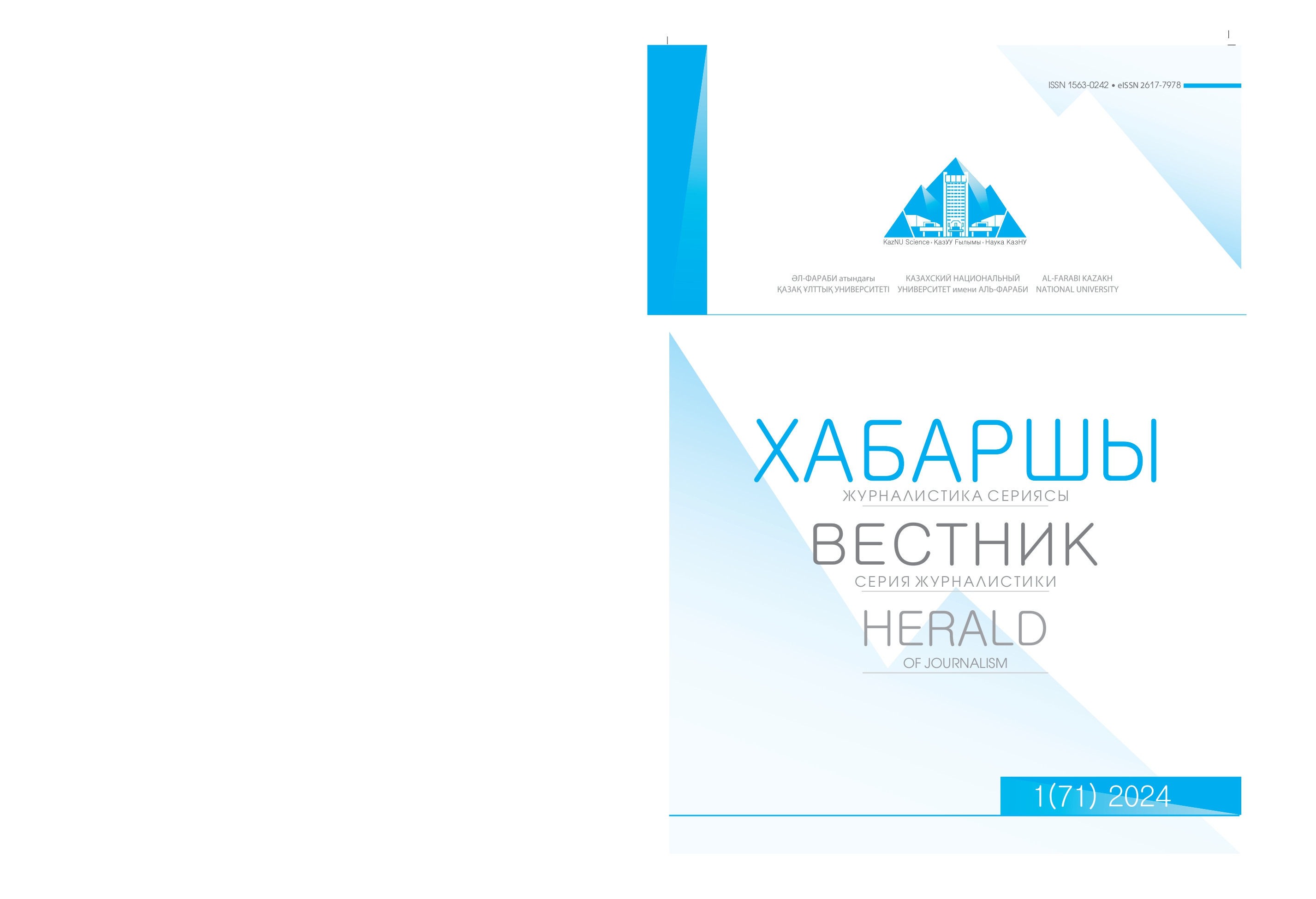The stage of storytelling development in journalism
DOI:
https://doi.org/10.26577/HJ.2024.v71.i1.4Keywords:
storytelling, longrid, trend, multimedia, global era.Abstract
The purpose of the research is to identify the main stages of the development of storytelling as a means of communication in journalism.
The study defines the types of context in which the term "storytelling" is used; comprehensively analyzes scientific publications in which storytelling is considered as a means of communication; indicates specific communicative models of this tool, highlighted by researchers; identifies the main stages and patterns of storytelling development as a mean of communication.
The research methodology is a generalization and expert analysis of foreign scientific research and data, information about storytelling.
As a result of the research work, it has been proven that, although the term storytelling has recently entered scientific circulation, the roots of this concept go back to the early centuries; the meaning of the concept of storytelling in the countries of the world is growing day by day.
The scientific and practical significance of the research work lies in the fact that the concept of storytelling in the modern global era finds special expression in the field of journalism. Accordingly, due to the emergence of various media platforms, the complexity of the stages of development and historical aspects of storytelling, as well as the diversity of this concept in modern society, spiritual, cultural, political and historical aspects are revealed.
The scientific novelty of the work lies in the analyses of a still little-studied multimedia journalistic-plot phenomenon. In particular, this issue was practically not considered in the domestic scientific community. Moreover, in modern media environments, there is still no clear idea of what is connected with the narrative-genre, form, format or method of creating journalistic material. Accordingly, the object of this study is a multimedia narrative (as a genre), its formats in Kazakhstani and foreign media practice. The subject of the study is the technological and conceptual features of Kazakhstani and foreign multimedia projects in the genre of restoration. Depending on the purpose, the following tasks were formulated: to define the basic conceptual framework of multimedia journalistic conversation formats; to identify the technical and aesthetic features of building a story; development of criteria for analyzing long-term reading as a multimedia narrative format; comparison of Kazakhstani and foreign approaches in the preparation of journalistic materials in the format of long-term training.




